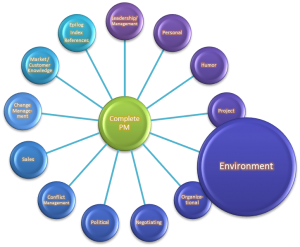More systemic and widespread progress is possible than in any other area when complete project managers focus attention on creating project-friendly environmental conditions. The same approaches applied by equally talented managers may have quite different outcomes depending upon the culture, operating principles, structure, customs, procedures, and values in place. I refer not to the physical environment but to the surrounding interrelationships among people that permeate how and what happens in an organization. These are the man-made artifacts that overlay the physical environment.
It is increasingly likely that multicultural teams become the norm in most environments. The complete project manager needs to be sensitive to the impact of culture on every project…and how
to create an effective culture.
Complete project managers embrace chaos as a natural operating force. A firm grasp of purpose is the means to prosper in any environment. It is also important to take social responsibility for being a good citizen in the larger context of the surrounding environment.
To be successful, it is necessary to assess the current environment (see Graham and Englund, Creating an Environment for Successful Projects) and understand the forces driving all behaviors. With this knowledge in place, it becomes possible to know how to approach project based work with a higher probability of success, centered upon reality based knowledge of how people operate in a specific environment. Putting this knowledge to work happens in preparing and executing action plans.
Consider the multiplicative effect of these elements of management attention on environmental operating climate, as described by Goleman, Boyatzis, McKee in Primal Leadership (pp 17-18):
- In one study, climate alone accurately sorted companies into high versus low profits and growth in 75 percent of cases. x
- Climate—how people feel about working at a company—can account for 20 to 30 percent of business performance. x
- The actions of the leader account for 50 to 70 percent of how employees perceive their organization’s climate. =
These suggest a leader’s actions can predict up to 16 percent of an organization’s performance (.75 x .30 x .70 = .16). That is a significant compounding effect that deserves attention—it is important to spend time on environmental improvement programs.
Randy Englund, Englund Project Management Consultancy, www.englundpmc.com

